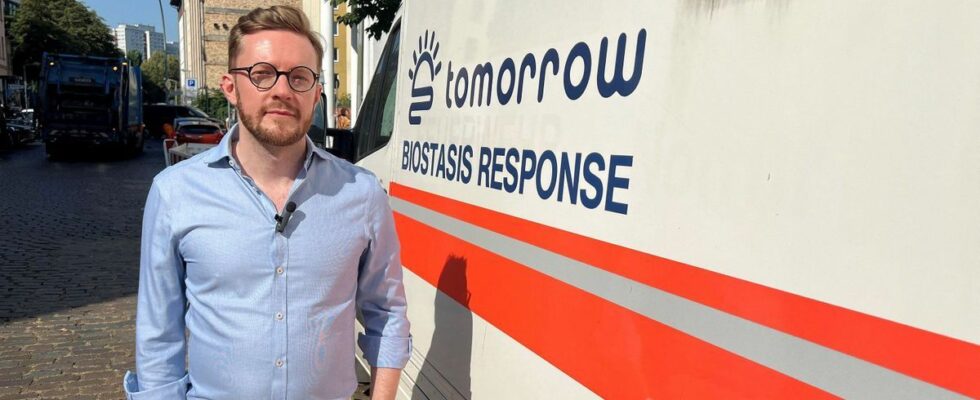Published on
updated on
Reading 3 min.
At 24, Becca Ziegler already has plans for the afterlife: her body will be frozen in the cold by a laboratory in Berlin in the tenuous hope of a new life.
This American, who lives and works in the German capital, signed a contract with the start-up Tomorrow Biostasis, specializing in the conservation of the deceased at very low temperatures to resuscitate them if progress in science one day allows it.
Cryonics is no longer reserved for a few eccentrics
When her time comes, a team of doctors will immerse Becca Ziegler in a tank of liquid nitrogen, at a temperature of -196°C, then transfer the capsule to a center in Switzerland.
“Overall, I love life and I’m curious to see what our world will look like in the future“, explains to AFP Ms. Ziegler, product manager for a Californian technology company.
Appearing in the 1960s, cryogenics is no longer reserved for eccentric billionaires or the realm of fiction – Han Solo is cryogenically frozen in “The Empire Strikes Back” and Louis de Funès is confronted in “Hibernatus” on his return to the life of a man freed from the polar ice.
Several companies in the United States already offer this process and it is estimated that around 500 people have surrendered their corpses to eternal cold.
Fifty euros per month
Founded in 2020 in Berlin, Tomorrow Biostasis is the first company of its kind in Europe. One of its objectives “is to reduce costs so that cryogenics becomes accessible to all“, one of the founders, Emil Kendziorra, told AFP.
In exchange for a monthly contribution of 50 euros throughout their life, the start-up undertakes to freeze its customers after their death. Added to this is a lump sum of 200,000 euros to be paid after death – 75,000 euros for freezing the brain alone -, which can be financed via a life insurance system.
Aged 38 and from Darmstadt, western Germany, Mr Kendziorra studied medicine and specialized in cancer research, before throwing in the towel, frustrated by the slow progress in this area, he says.
“One of the best things about cryonics is that you can do it right now“, he observes.
Tomorrow Biostasis specifies that it has around 700 customers under contract and says it has carried out the cryogenics of four people at the end of 2023. According to Mr. Kendziorra, the typical customer is between 30 and 40 years old, works in the technology sector and is more of a man than ‘a woman.
When a customer dies, Tomorrow Biostasis undertakes to send an ambulance specially equipped to cool the deceased using ice and water. The body is then infused with a “cryoprotectant” and transported to the dedicated facility in Switzerland.
Rabbit brain
In 2016, a team of scientists managed to maintain the brain of a rabbit in perfect conditions during cryogenic storage. In May this year, Chinese researchers from Fudan University used a new technique to freeze human brain tissue, which was found to be fully functional after 18 months of cryogenic storage.
But for Holger Reinsch, researcher at the ILK research institute in Dresden (eastern Germany), the hopes of bringing a frozen person back to life in the near future are very slim.
“We are skeptical. Personally, I would advise you against using such a process“, he told AFP. “In medical practice, the limit for cryopreservation of tissue structures is the size and thickness of the thumbnail. This situation has not changed since the 1970s“, he continues.
Mr Kendziorra admits there are no guarantees: “We don’t know if this will ever be possible. I think there’s a good chance, but am I sure? Absolutely not“.
No matter what happens in the future, Ziegler says she’s confident she won’t regret her decision. “It may seem strange, she admits. But on the other hand, the alternative is being put in a coffin and eaten by worms“.
